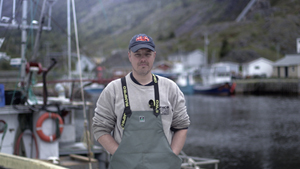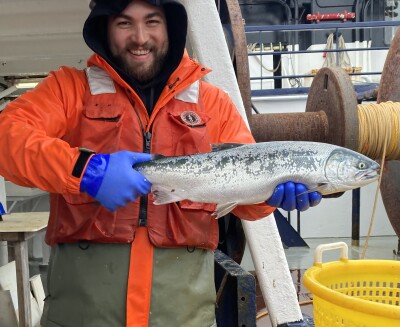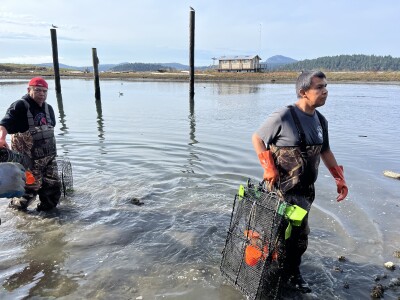Todd Chafe began fishing cod traps with his father when he was 12 years old, and then it was over.
Chafe and other fishermen from Newfoundland and Labrador saw the only way of life they had ever known vanish when the moratorium was imposed on Atlantic Canada's cod fishermen in 1992. It was a fisherman's worst nightmare (besides a sinking) come true: No fish, no work, no hope.
"Everything changed. ... Then you just see everybody walking around doing nothing, wondering what they're going to be doing," he remembers.
Chafe, who's from Petty Harbour, Newfoundland, is shown fishing for snow crab with his father, George, in a video released by the Canadian Council of Professional Fish Harvesters. Fortunately for Chafe and others in the fleet, targeting snow crab has helped keep them on the water:
With cod gone, snow crab has become the economic engine of most fleet sectors in Newfoundland and Labrador according to the Department of Fisheries and Oceans. How much so has varied over the years, depending on price. For boats smaller than 65 feet, it accounted for 65 percent of their landed value in 2004, and 48 percent in 2008.
That fishery — like all — has its challenges. The increase of the Canadian dollar's value to about the same as the U.S. dollar has cut into profits for snow crab fishermen. About 50 percent of their catch goes to the U.S. When the U.S. dollar was worth more, they made more money. Now they make less.
Another big question mark for them is competition from Alaska. According to DOF, Alaska's snow crab catch ranged from 9,000 to 17,000 metric tons (MT) from 2000 to 2007 and then it jumped to 28,600 MT in 2008. Quota is set for about 30,000 MT this season.
Fishermen often have much to contend with. But it seems to me most would (and do) put up with a lot of hassles to keep fishing. It's a way of life not suited for everybody, but for those it is suited for, nothing could ever replace a day on the water.
Photo of Todd Chafe courtesy of Canadian Council of Professional Fish Harvesters. According to CCPFH, the video is part of a series being funded by the Government of Canada and being produced by Kobb Media. Learn more by visiting its website.







